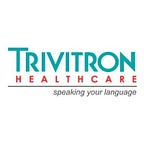Lead Apron Safety: Minimizing Musculoskeletal Risks for Physicians and Health Workers
The use of lead aprons for radiation protection is a cornerstone of safety in healthcare settings. While these aprons effectively shield against ionizing radiation, prolonged wear can lead to musculoskeletal discomfort and potential injuries, particularly for physicians and healthcare workers who spend extended periods on their feet or performing procedures. This article explores the musculoskeletal risks associated with lead aprons and highlights strategies for minimizing these risks to ensure the well-being of healthcare professionals.
The Burden of Lead Apron Weight
Lead aprons, crucial for shielding against harmful radiation, are inherently heavy due to their lead content. This weight, often exceeding 10 pounds, places a significant strain on the shoulders, neck, and lower back, especially during long shifts or when performing intricate procedures. The constant weight can lead to:
Muscle fatigue and strain: Sustained tension in the muscles surrounding the shoulders, neck, and back can cause fatigue, soreness, and stiffness, potentially limiting mobility and impacting overall performance.
Postural imbalances: The weight of the lead apron can alter the body’s natural posture, leading to uneven distribution of weight and putting undue stress on specific joints. This can contribute to pain and discomfort in the back, hips, and knees.
Increased risk of injury: Prolonged exposure to heavy lead aprons increases the risk of developing musculoskeletal injuries like back pain, disc herniation, and even carpal tunnel syndrome due to repetitive strain and postural changes.
Strategies for Minimizing Musculoskeletal Risks
While lead aprons are essential for radiation protection, healthcare professionals can implement strategies to mitigate the associated musculoskeletal risks:
Choosing the Right Apron: Opting for lighter-weight lead aprons, such as those made with newer, thinner lead materials, can significantly reduce the strain on the body. Trivitron’s radiation protection apparel collection, for example, offers a lead apron meticulously crafted to prioritize both safety and comfort. This apron features a lightweight design, ensuring no compromise on protection while minimizing the weight burden.
Proper Fit and Adjustments: Ensuring the lead apron fits correctly is crucial. A poorly fitted apron can cause discomfort and exacerbate postural imbalances. Adjusting the apron’s straps, buckles, and weight distribution can significantly improve comfort and reduce strain on the body.
Regular Breaks and Movement: Taking regular breaks to stretch, move around, and change positions is essential to prevent muscle fatigue and maintain proper posture.
Ergonomic Support Devices: Using ergonomic support devices such as back braces, lumbar cushions, or neck pillows can help improve posture and reduce pressure on vulnerable areas.
Ergonomic Equipment: Investing in ergonomic equipment, such as adjustable chairs, height-adjustable tables, and standing desks, can create a more comfortable and safe working environment for healthcare professionals.
Proper Lifting Techniques: When handling heavy equipment, including lead aprons, utilizing proper lifting techniques can minimize strain on the back and prevent injuries.
Training and Education: Regular training and education sessions on safe lead apron usage, ergonomic practices, and posture maintenance are vital for promoting awareness and preventing injuries.
Conclusion
Lead aprons play a critical role in protecting healthcare workers from harmful radiation, but their weight can also pose musculoskeletal risks. By adopting these strategies, healthcare professionals can minimize these risks, ensuring their well-being while maintaining their commitment to patient care.
Trivitron’s lead apron for radiation protection, with its focus on safety and image quality, provides a solution that balances essential protection with enhanced comfort, promoting a safer and more ergonomic experience for healthcare professionals. By choosing the right apron and prioritizing ergonomic practices, healthcare professionals can ensure both their safety and the well-being of their patients.
Read our blog about how to inspect your lead aprons.
